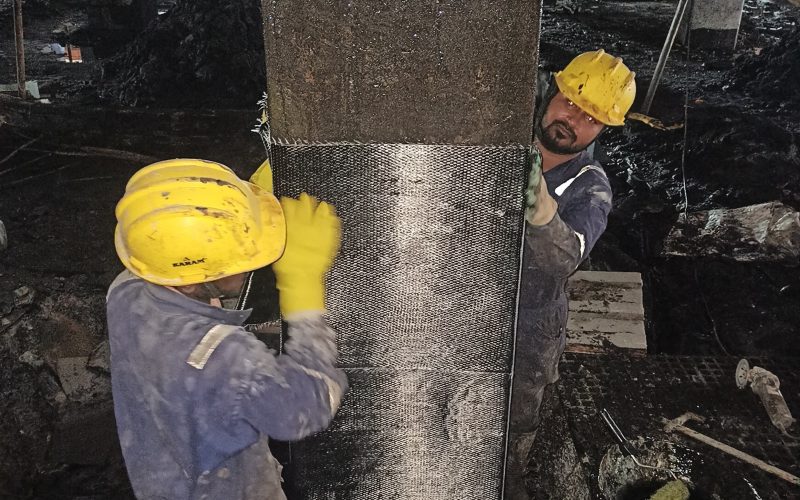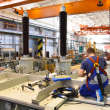India’s built environment is a mix of modern marvels and aging structures.
While new towers rise across cities, many older buildings face serious structural issues.
Over the decades, concrete degrades, steel corrodes, and foundations shift due to natural wear.
However, rather than demolition, there are smarter, sustainable ways to prolong life.
One such technique gaining popularity is Carbon Fiber Wrapping, a modern engineering marvel for repair.
Why Strengthening Old Buildings Is Crucial Today
Aging buildings in India often lack modern safety features and design upgrades.
Frequent environmental exposure, especially in coastal or high-humidity zones, accelerates their decline.
As urban populations grow, the stress on these buildings also increases significantly.
Demolishing and rebuilding isn’t always feasible, especially for heritage or occupied properties.
Thus, methods like Carbon Fiber Wrapping offer a practical, long-lasting, and non-disruptive strengthening solution.
Understanding Carbon Fiber Wrapping Technology
Carbon fiber is a lightweight, high-strength material used extensively in aerospace and civil industries.
When woven into fabrics and bonded with resin, it forms a flexible yet incredibly strong composite.
These sheets are wrapped around columns, beams, or slabs to restore structural integrity.
They conform to any shape and add minimal weight, making them ideal for retrofitting.
This is the basic science behind Carbon Fiber Wrapping, now widely adopted across India.
How the Wrapping Process Works
The structure’s surface is first prepared by cleaning, grinding, and removing damaged concrete.
Next, a primer is applied followed by a bonding resin layer that holds the carbon fiber.
The fabric is then laid onto the structure and pressed firmly to ensure adhesion.
A final layer of resin is applied to seal the system, completing the retrofit.
Properly applied, Carbon Fiber Wrapping significantly enhances the load capacity and durability of old structures.
Key Applications Across Indian Infrastructure
From residential complexes to industrial sheds, this solution fits many building types.
In cities like Mumbai and Kolkata, older apartment blocks benefit from wrapping aging beams.
In schools, hospitals, and commercial buildings, it helps improve safety without disrupting use.
Even bridges, flyovers, and heritage buildings have adopted this advanced retrofitting method.
Therefore, Carbon Fiber Wrapping serves as a reliable strengthening method for India’s diverse infrastructure.
Benefits Over Traditional Strengthening Techniques
Compared to steel or concrete jacketing, carbon fiber is faster to install and doesn’t require heavy labor.
It doesn’t increase structural load or reduce usable space, maintaining original architectural intent.
Additionally, it resists corrosion, making it ideal for humid and coastal environments in India.
Minimal downtime means buildings remain functional during repairs, a huge plus for busy cities.
Thus, Carbon Fiber Wrapping offers clear advantages in strength, speed, and sustainability.
Seismic Resilience and Disaster Preparedness
Many regions in India lie in high seismic zones, such as Gujarat, Himachal, and Northeast states.
In these areas, improving a structure’s ductility is critical to prevent collapse during earthquakes.
Wrapping provides additional confinement, allowing concrete to deform without failure under seismic stress.
It also supports vertical load retention when horizontal forces hit the building.
Therefore, Carbon Fiber Wrapping is considered an effective tool for earthquake preparedness and structural resilience.
Cost-Effective Solution for Indian Property Owners
While initially considered expensive, the cost of wrapping has become more affordable in India.
Due to reduced labor time and no demolition, the overall cost stays reasonable.
Also, savings from avoiding future repairs, litigation, or complete rebuilds are substantial.
Homeowners in India now view it as a long-term investment rather than a repair expense.
For many, Carbon Fiber Wrapping proves to be economical and performance-driven over time.
Ideal for Occupied and Operational Buildings
Disruptive repair methods often require residents or tenants to vacate during the process.
This is impractical for homes, hospitals, or offices with ongoing operations.
In contrast, wrapping can be done quickly and quietly without affecting daily activity.
The process doesn’t require noisy machinery or large-scale scaffolding systems.
Hence, Carbon Fiber Wrapping is preferred for live buildings needing urgent structural upgrades.
Environmental Benefits of Using Carbon Fiber
India is pushing for green construction and eco-friendly repair alternatives.
Wrapping uses minimal resources and creates very little waste compared to traditional methods.
Its long life means fewer interventions and lower carbon footprint across the structure’s lifespan.
Also, the absence of steel reduces the need for corrosion control or future material disposal.
That makes Carbon Fiber Wrapping a part of India’s sustainable infrastructure goals.
Choosing the Right Projects for Carbon Wrapping
This solution is most effective when early signs of damage are spotted.
These include hairline cracks, reduced load performance, or moisture ingress around structural elements.
It can also be used in structures needing load upgrades for additional stories or usage changes.
Even fire-damaged buildings have been strengthened using wrapping technology post structural inspection.
Clearly, Carbon Fiber Wrapping is versatile and widely applicable across many Indian building types.
What Indian Audiences Should Look For
When seeking repair services, look for engineering teams with structural expertise and site experience.
Quality materials, proper design, and adherence to Indian codes are essential for success.
Request references from past projects and check certifications of the executing professionals.
Timely maintenance after wrapping also ensures longer durability and retained performance.
Selecting the right team makes Carbon Fiber Wrapping an excellent investment in safety and longevity.
How It Supports Heritage Preservation in India
India is rich with historical buildings that need strengthening without altering their aesthetics.
For such structures, invasive techniques may damage intricate architecture or materials.
Carbon wrapping fits these needs perfectly, being non-intrusive and visually discreet.
Several temples, forts, and colonial-era buildings have already benefited from such subtle retrofits.
Thus, Carbon Fiber Wrapping is helping protect cultural heritage while ensuring modern safety standards.
Government Adoption and Urban Policy Trends
As Indian cities grow smarter, municipal bodies are evaluating wrapping for infrastructure upgrades.
Bridges, flyovers, and old government offices are being assessed for fiber-based retrofitting.
Public-private partnerships and tender-based contracts are fueling this shift towards modern repair.
This supports faster project completion and improved safety for citizens.
It’s clear that Carbon Fiber Wrapping is becoming part of India’s future-ready development plans.
Key Limitations and Factors to Consider
While effective, wrapping is not suitable for every structural condition.
Severely damaged or crumbling concrete may require more invasive reinforcement first.
Also, incorrect application or poor-quality resin can reduce performance.
Trained manpower and proper engineering supervision are essential to avoid such outcomes.
That’s why careful planning is necessary before initiating Carbon Fiber Wrapping projects.
The Role of Technology in Better Execution
Advanced tools like laser scanners, drones, and non-destructive testing improve repair design accuracy.
Thermal cameras detect hidden moisture or voids before the wrapping process starts.
Data-driven monitoring systems allow engineers to check the health of wrapped components over time.
This integration of modern technology ensures that repairs last and perform as intended.
Technology is helping Carbon Fiber Wrapping become safer, smarter, and more efficient in India.
Embrace the Future of Structural Strengthening
To conclude, India faces the dual challenge of preserving older buildings and supporting new growth.
Replacing every weak structure is neither practical nor sustainable, especially in crowded cities.
Modern solutions like Carbon Fiber Wrapping offer the perfect balance of strength, speed, and savings.
By adopting it, property owners ensure safety while embracing advanced global construction practices.
Now more than ever, this technique is empowering India to build stronger, longer-lasting, and safer spaces.












